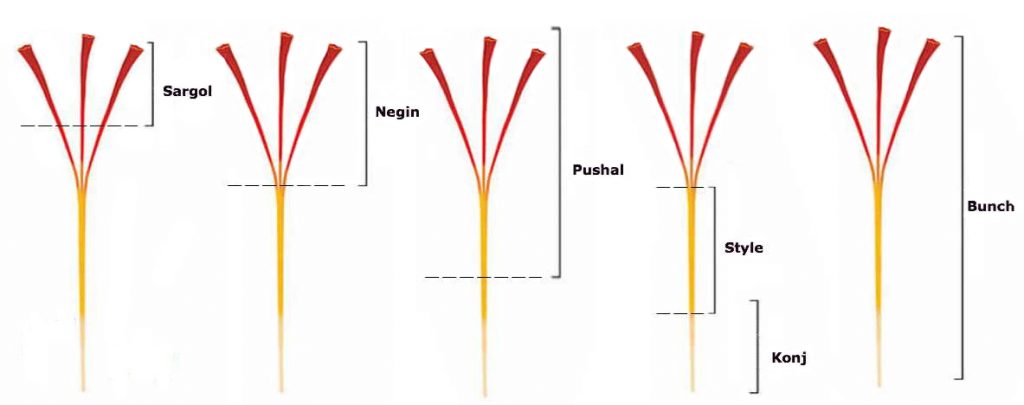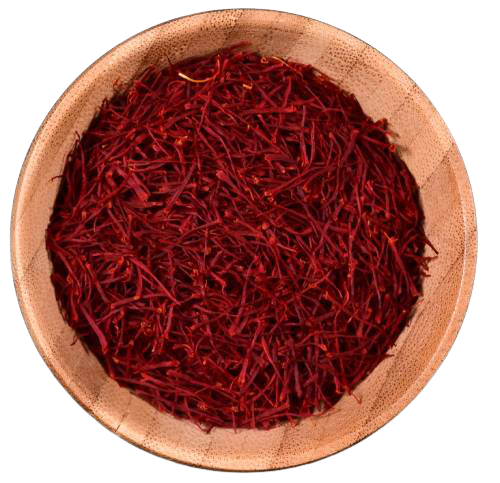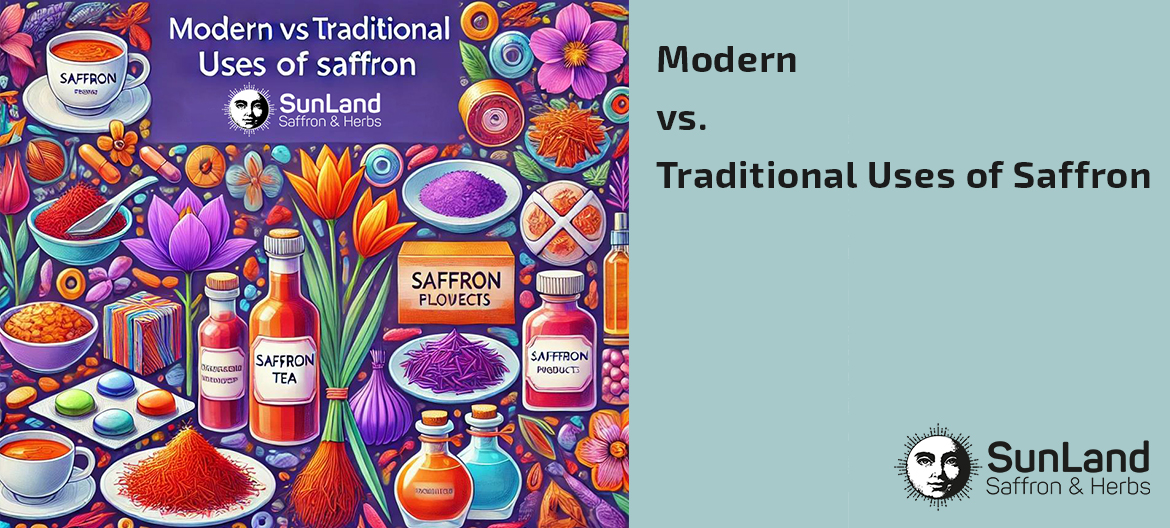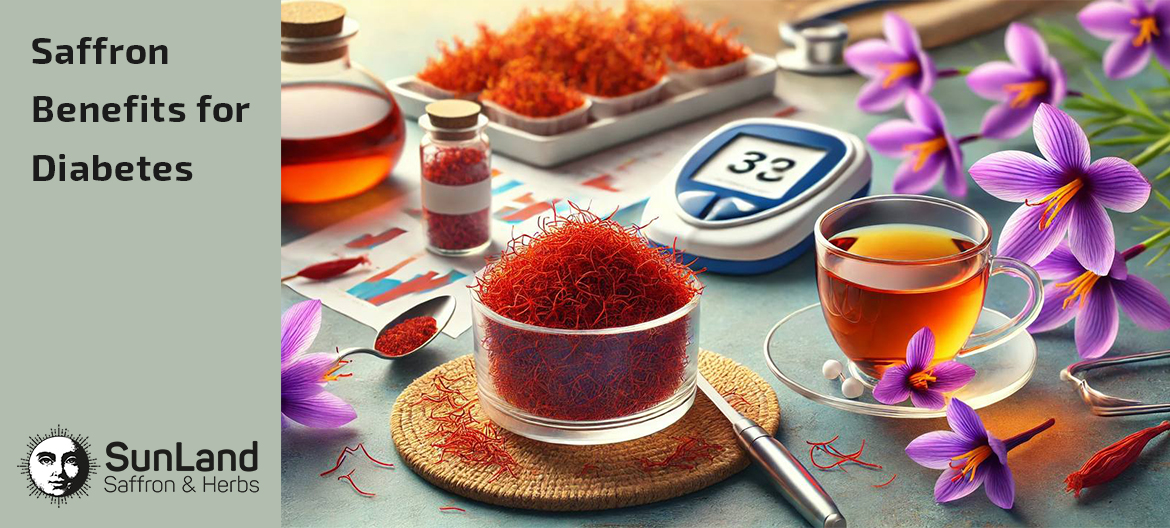Traditional and Modern Uses of Saffron
Saffron is a very valuable spice as it has found many industry applications. In the past, saffron had limited and simple usages, however, it has found many applications in different …

The saffron produced in each geographical region has a specific name, appearance, and chemical properties based on regional climatic conditions, saffron flower processing, and its culture use. Therefore, different types of saffron are produced all around the world. This blog post explores saffron types including Iranian saffron, Spanish saffron, and Keshmiri saffron.
Iranian saffron is becoming more popular worldwide and is recognized for its superior quality. Persian saffron has long been renowned for its excellence and flavor. Although saffron cultivation is concentrated in a few Iranian provinces, Persian saffron accounts for over 90 percent of the global saffron supply. Currently, various types of saffron are exported to more than 53 countries. We provide a brief overview of different types of Iranian saffron. For more detailed information about each type, please refer to the links below:
The Iranian saffron types include:
There are two important factors, which highly affects the quality and types of saffron:
These two factors, along with many more factors such as planting to harvest methods and conditions, different ways of stigma stripping, drying, and storing, have a great effect on the type and quality of saffron. In the rest, you will learn about different types of Persian saffron, called Zafaran locally.

All Red is one main category of Persian saffron , named so for its completely red look and absence of style. All Red saffron consists of three subcategories: Sargol, Negin, and Super Negin.

Super Negin is the most potent and finest saffron type in the world. Super Negin, as the highest quality and luxurious saffron type, only includes long-flat and thick stigmas, without the yellow styles. Super Negin Saffron has the longest stigmas and the best appearance of all types. The stigmas are cut symmetrically, without any wave.
Super Negin is the most desired saffron for various uses, as it possesses great coloring power and aroma. Producing Super Negin Saffron is challenging and requires professional manual skills and the use of technical equipment compared to other types. Consequently, it demands more time and effort, making it the most expensive type among other Persian saffron varieties.
Read more about Super Negin Saffron?

Negin Iranian saffron is ranked second in terms of quality and price. There is no difference between Negin and Super Negin, except for the length of the stigma and physical appearance.
In terms of appearance, Negin saffron is not long and flat, but it has the typical look of saffron threads. It is worth noting that Negin Saffron has a higher coloring power of over 220 usp. Due to its lower price compared to Super Negin, it is more popular for home use.
Features of Negin saffron:
Read more about Negin Saffron?

Sargol saffron is shorter in size in compared to Negin Type. In pure Sargol, the style is removed from red stigmas. Sargol Saffron and Negin saffron are alike in terms of quality and coloring power. Sargol saffron is derived from Poushal or filament saffron.
The main sub qualities of Sargol saffron are:
With a Crocin level (coloring strength) higher than 220, has few broken particles of saffron stigmas. Additionally, its coloring power is better than Sargol Grade one. In Momtaz, the stigmas are relatively larger and thicker than Sargol Grade One.
On the other hand, there is Sargol Grade One, in which more broken stigmas can be found. In Grade One, Stigmas are smaller than Momtaz or premium quality, while its coloring power reaches 200 USP.
Features of Sargol saffron
Read more about Sargol Saffron?

Poushal Iranian saffron, or Filaments saffron, includes red color stigmas with a 1-15 mm long creamy style. Farmers can yield about 1kg of Poushal from 80-100 kg of the saffron crocus flower. Depending on stigma size and thickness, Poushal or Filaments have less coloring power than Negin and Sargol types, as they contain styles.
Poushal or Filaments is classified into four grades:
Filaments Grade One: Poushal Grade One consists of stigmas along with a 1-6mm style attached. In this grade, there are smaller and thicker stigmas than in grade two. The coloring and appearance of Grade One are lower than All-Red Types. The coloring strength of this type of saffron is a minimum of 200 units.
Filaments Grade Two: Poushal Grade Two has longer styles, mainly 6-10mm. This grade is weaker than Grade One, in terms of appearance and coloring power. This grade is thinner than Poushali’s Grade one. In recent years, saffron dried in open air has been categorized as Poushali G2, because it seems weak in terms of appearance compared to machine-dried ones. The minimum coloring power in this grade is 180 units.
Poushal Grade Three has longer styles, mainly 10-15mm. the longer the styles are, the weaker they become in terms of appearance and coloring power. It may have a darker color compared to other grades. The coloring power of this grade is 150 units at the minimum
Known as Dasteh or Dokhtarpich saffron, which will be explained as a separate type of saffron.
Features of Poushali saffron
Read more about Poushal/Filaments Saffron?

Bunch Saffron, locally known as Dasteh or Dokhtar-Pich, has a lower coloring power than All Red and Poushal Types. The reason is that bunch type is associated with a lot of yellow styles attached to red stigmas, all threads wrapped like a cluster. The more style it contains, the less expensive it becomes in the market.
Features of Bunch saffron
Read more about Bunch Saffron?

Powder saffron, or ground, is the saffron stigmas in a powdered way. Saffron powder is made of saffron stigmas, which have been dried and ground. Even if you have saffron threads, you can use mortar or pestle to make saffron powder. The saffron powder can be easily used instead of saffron threads. Another benefit of saffron powder in cooking is that there is no sign of saffron stigma in your dish. Moreover, you can add the saffron powder directly into your dish, with no need to toast or pre-soaking.
Features of Powder saffron
Read more about Powder Saffron

Konj or white saffron is the yellow style of saffron, with no red stigma. Konj saffron maintains more moisture because of its textual differences. However, the main worthy properties of saffron, such as Crocin, are hidden in red stigmas. Konj or white saffron has no coloring power, however; used for many purposes, which will be explored more in the below link.
Features of Konj saffron
Read more about White Saffron
In addition to Persian saffron types, there other types of Spanish, Keshmiri, Moroccan, Italian and Greek saffron which will be addressed in the following lines:
Spanish saffron is placed in second position in terms of quality and flavor after Iranian types of saffron. Spain is one of the largest producers of saffron, and it produces several varieties, each with its characteristics. Here are some types of Spanish saffron:
Coupe saffron is the highest grade of Spanish saffron. It consists of only the red stigmas of the Crocus sativus flower, without the yellow style. Coupe saffron is known for its intense aroma, deep red color, and potent flavor. It is considered the best quality saffron and is highly prized in culinary applications.
Mancha saffron is another popular variety from Spain. It includes the red stigmas along with a small portion of the yellow style. Mancha saffron is known for its vibrant color and strong flavor. It is widely used in Spanish cuisine, such as in paella, stews, and desserts. This type of Spanish saffron is similar to Poushal Iran saffron in terms of appearance.
Rio saffron is a type of Spanish saffron that is primarily cultivated in the La Mancha region. It is a high-quality saffron variety with a deep red color and a distinct floral aroma. Rio saffron is valued for its flavor and is commonly used in traditional Spanish dishes.
Kashmiri saffron, also known as “Kashmir saffron” or “Kashmiri Kesar,” is highly demanding saffron in the global market for its quality and flavor. This product is native to the region of Kashmir in India with a vibrant red color, strong aroma, and intense flavor.
There are mainly two types of saffron cultivated in Kashmir:
Mongra saffron is another type of Kashmiri saffron. In this type of saffron, only the stigma parts of the saffron flower are dried. The stigmas are carefully handpicked from the saffron flower and dried to preserve their flavor and aroma. Mongra saffron is considered to be of the highest quality and commands a premium price in the market.
Lachha saffron contains a stigma and some of the saffron flower’s yellow parts. This type includes saffron crumbs and is of lesser quality than keshmiri saffron type. Lancha saffron is slightly less expensive compared to Lachha saffron but still maintains a high quality.
Moroccan saffron is mainly cultivated in the region of Taliouine, Morocco, and harvested through an intricate labor-intensive process to produce four grades of All-Red saffron, Thread, tied bunch and bunch saffron:
Italy is not a major producer of saffron, however, around five regions in this country produce this valuable spice with distinctive features. Therefore, Italian saffron types are categorized based on their geographical place of cultivation, including:
Greece is not a major saffron producing country, and it only cultivates saffron on small scales. Greek saffron, known as Krokos Kozanis, is a well-known spice with a rich history. Greek saffron has a penetratingly husky and earthy flavor with notes of honey complex taste. Compared to other types of saffron, Greek saffron tends to be earthier and slightly more bitter, but its honey undertones are also more intense.
SunLand has made it easy to order different types of saffron online. SunLand offers all the aforementioned Iranian saffron types. More importantly, SunLand delivers bulk and wholesale saffron of all types for export and local use. Many international customers have become loyal to SunLand for its commitment to quality standards. SunLand’s consumer packaging is suitable as saffron souvenirs and gifts. Additionally , SunLand offers private and white labeling for numerous customers and trade partners worldwide.
The best Iranian saffron is Super Negin saffron, which has better fibers than Negin saffron. Also, Super Negin precious saffron has a richer red color.
Persian saffron have 4 type and their name are Super Negin Saffron, Negin Saffron, Sargol Saffron and Pushal.
Because Iranian saffron has a higher quality than its competitors and also the collection of saffron flowers is done manually, which makes saffron picking desirable.
Super Negin is the most expensive type of saffron because it is the best type in terms of quality and appearance.
You can choose a type of saffron based on your budget and type of usage.
Share this content:


Saffron is a very valuable spice as it has found many industry applications. In the past, saffron had limited and simple usages, however, it has found many applications in different …

Type 2 diabetes, a common metabolic disorder, affects millions worldwide, often leading to other severe health complications. This chronic condition makes the body resistant to insulin, the hormone responsible for …

Organic saffron is highly sought-after for its rich flavor profile, high quality, and environmental benefits. Special farming practices, unique environmental conditions, and careful attention to soil health are required for …
Producing saffron in different regions results in different qualities and types. This is an expensive spice, and most countries are eager to get involved in the production and export of …
[…] To gain some knowledge about different types of Iranian saffron, we encourage you to read “Types of Iranian Saffron.“ […]
how can I download this pictures of saffron in this page?
Sorry Ali, you can’t download media from our website 🙂
Dear Ali,
Sorry to inform you that you are not permitted to download/use media in this page
[…] typs of iranian saffron […]
[…] sunlandsaffron.com […]